Tourist guides are normally concerned with what is above ground, but London also has a fascinating underground story. As well as the famous buildings you can see on the surface – Westminster Abbey, Saint Paul’s Cathedral, Buckingham Palace, and the Tower of London – London has a network of underground sewers and rivers that repay close attention.
In the first of the recent Sherlock Holmes films, in which the famous detective is portrayed by Robert Downey Jr, Holmes is shown running underground from Big Ben to the Tower of London along the then newly opened sewer. In practice, he would have probably been overcome by the stench of the sewer and its human waste and would have taken considerably longer than the few seconds shown on screen in the film. Hollywood, however, never lets the truth get in the way of a good story, so Downey playing Holmes, came out from his run looking spotless to confront the villain (played by Mark Strong) at Tower Bridge.
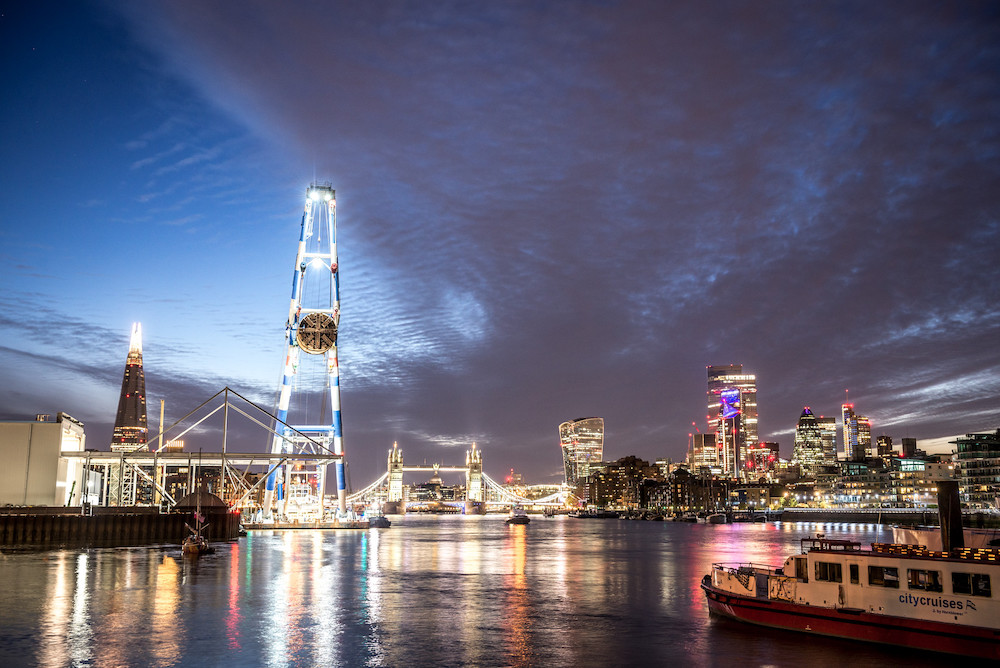 TBM Ursula lifted from the site at Chambers Wharf, Bermondsey. Photo Credit: © Tideway London.
TBM Ursula lifted from the site at Chambers Wharf, Bermondsey. Photo Credit: © Tideway London.
Joseph Bazalgette Sewer System
The London sewer was built by Sir Joseph Bazalgette in the 1860s as part of a plan to improve the quality of the water in the city. Bazalgette constructed a sewage network 82 miles (132 kilometres) long, and the introduction of the efficient disposal of human waste and clean water did a great deal to improve the health of ordinary Londoners by eliminating diseases such as cholera, which killed 10,000 people in the outbreak of 1853 and 1854.
A monument to Bazalgette stands on the Victoria Embankment, which he had built as part of this sewage system. Up to then, the River Thames had been little more than an open sewer into which people emptied their waste. The memorial can be seen near Hungerford Bridge, which was designed by another famous engineer, Isambard Kingdom Brunel. The bust of Bazalgette is by the sculptor George Blackall Simonds, a noted designer of war memorials, whose work includes one in Bradfield, Berkshire where he lived. This commemorates men killed in the First World War, one of whom was Simonds’ own son.
The project of cleaning up London’s water and thus improving the health of ordinary people living in the city was given a major jolt by the ‘Great Stink’ of 1858 when the stench of the River Thames was so powerful and obnoxious that the British parliament based in the nearby Palace of Westminster, had to suspend its sittings, despite hanging curtains soaked in lime chloride to counteract the smell. The satirical magazine Punch wrote that Britain ‘can colonise the remotest ends of the earth … but we cannot clean the River Thames.’
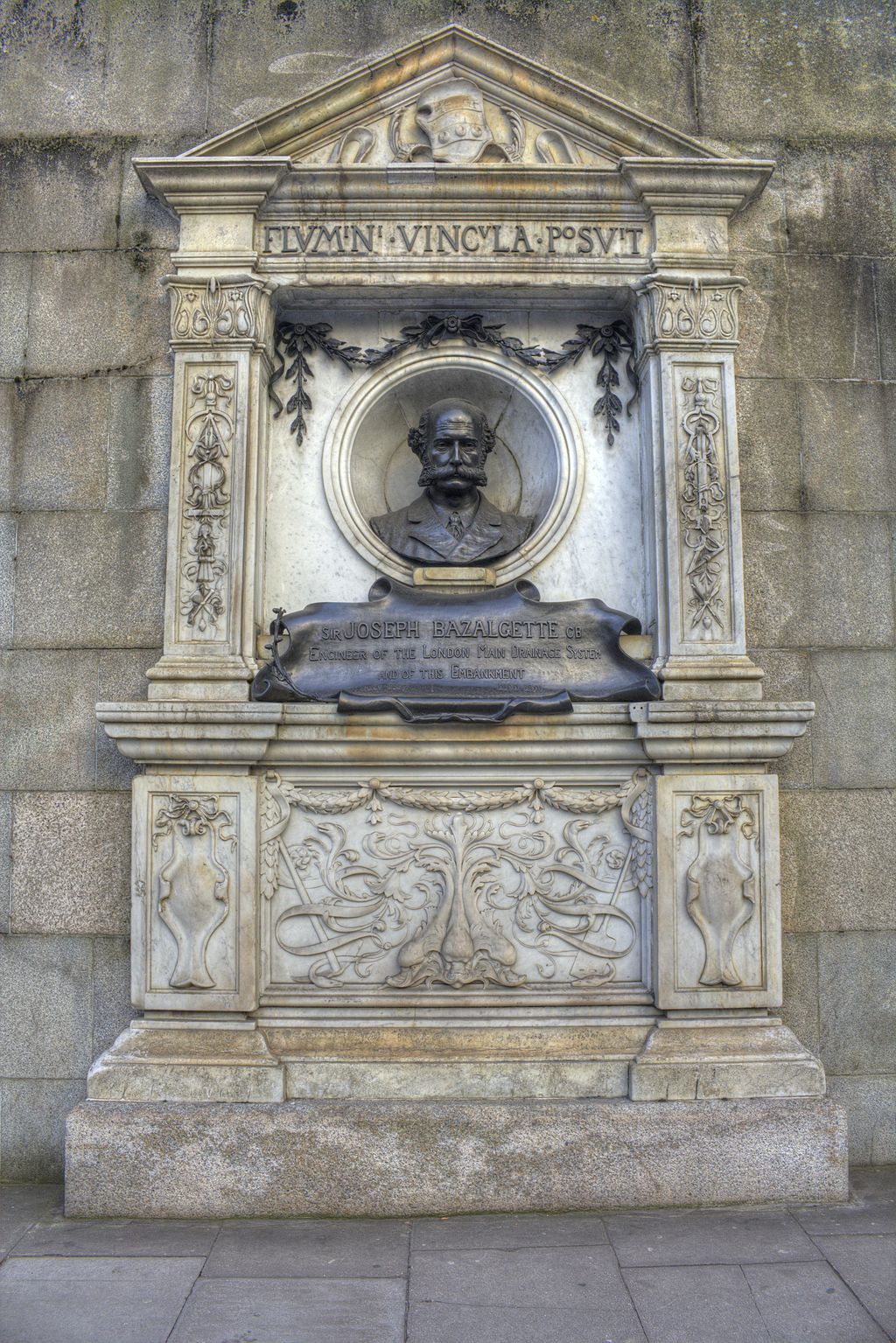 Joseph Bazalgette Memorial, Victoria Embankment in London. Photo Credit: © Prioryman via Wikimedia Commons.
Joseph Bazalgette Memorial, Victoria Embankment in London. Photo Credit: © Prioryman via Wikimedia Commons.
London had been affected by a long, hot summer and a threefold increase in population (from one to three million people) in the nineteenth century and was struggling to cope. In 1855 the monarch Queen Victoria and Prince Albert went on a cruise on the River Thames but had to give it up after a few minutes because the stink of the sewage was so strong.
When politicians are unable to perform their duties, they usually vote for money to overcome the problems facing them. Bazalgette, who had risen to become chief engineer of the Metropolitan Board of Works, proposed big changes to London’s sewage system and was granted the then enormous sum of three million pounds to bring these about. The results transformed life in the capital and saved the lives of thousands of Londoners, so Bazalgette deserves to be commemorated as a major contributor to the health of people in the capital.
These sewers, however, are now starting to show their age after nearly two hundred years of use by a population that has again trebled since Bazalgette’s time – from three million to nine million people today. Only a few millimetres of rain are needed for sewers built by him to overflow and bring sewage into the River Thames, which happens around once a week.
The Thames Tideway
A new ‘super sewer’ called The Thames Tideway is being constructed to take the load off Bazalgette’s system, and it will come into use around the year 2025. As with most major building projects, archaeology is an important precursor to construction, and the team who built London’s super sewer were careful to log any treasures uncovered during nearly two decades of digging. One of their most interesting finds was the skeleton of a man bludgeoned to death 500 years ago, found wearing nothing except for a pair of old boots.
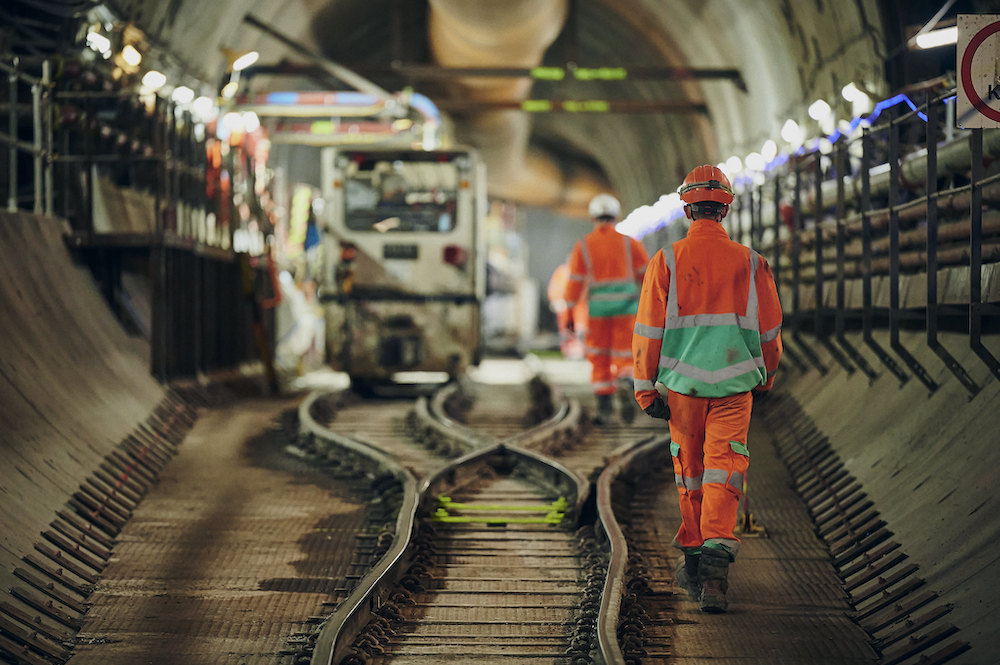 Workmen building a 25km Super Sewer under the River Thames. Photo Credit: © Tideway London.
Workmen building a 25km Super Sewer under the River Thames. Photo Credit: © Tideway London.
The Thames Tideway will take sewage from west to east as far as the Abbey Mills Pumping Station in Mill Meads near the 2012 Olympic Park. This building is known as ‘the cathedral of sewage’ and was built by a team that included Bazalgette and the architect Charles Driver. It was an important part of Bazalgette’s plans for London’s sewage system, and around sixteen million tons of sewage is still moved annually from Abbey Mills to Becton Sewage Treatment Works through the Lee Tunnel. The River Lee (sometimes spelled Lea) was traditionally the eastern boundary of London, but the capital has expanded a great deal since those days.
In earlier times, the east end of London was considered the poor relation of the west end because the prevailing winds would blow the foul smells of abattoirs, leather, and soap factories from the west towards the east. This had the effect of depressing property prices and life expectancy for local residents in the east. (A popular BBC soap opera about the poorer working-class people of London is called Eastenders.) However, the east end has become a fashionable area now as affluence has replaced effluence. The noses of both Londoners and visitors are protected as London’s sewage is now kept out of sight, and most people are unaware of the existence of the all-important sewage system beneath their feet.
The Thames Tideway, London’s ‘super sewer’ to give it its popular name, is one of Britain’s great infrastructure projects. Unlike the HS2 railway line, it is unlikely to gain a royal warrant. This, at least according to those who built the new sewage system, is a little ironical as King Charles is far more likely to use it than he is to ride on a train along HS2.
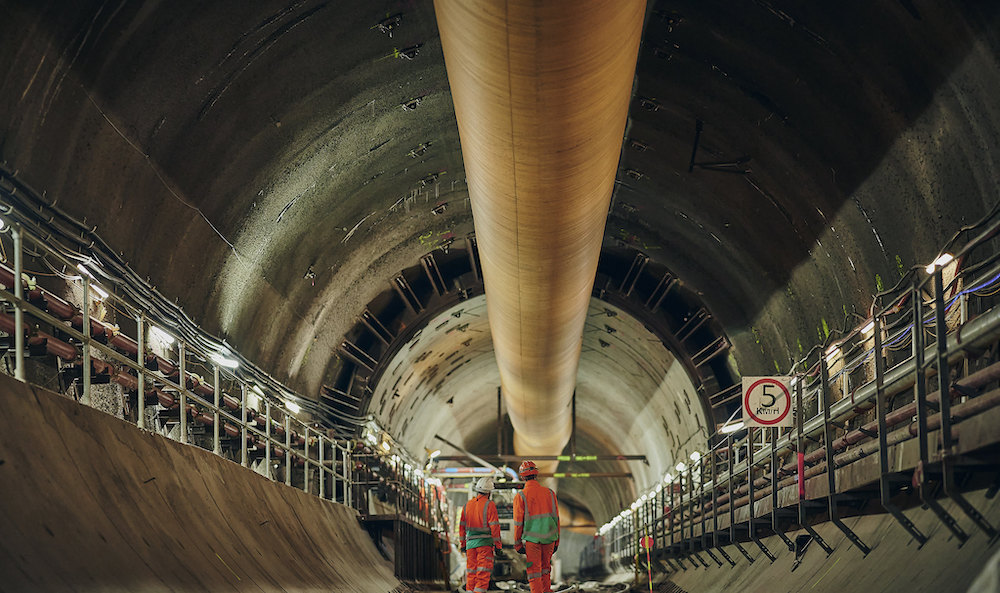 25km Super Sewer being built under the River Thames. Photo Credit: © Tideway London.
25km Super Sewer being built under the River Thames. Photo Credit: © Tideway London.



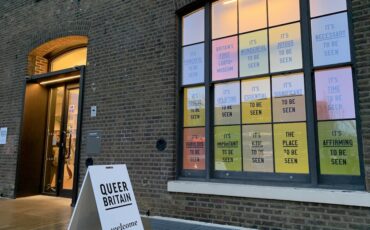



Leave a Reply